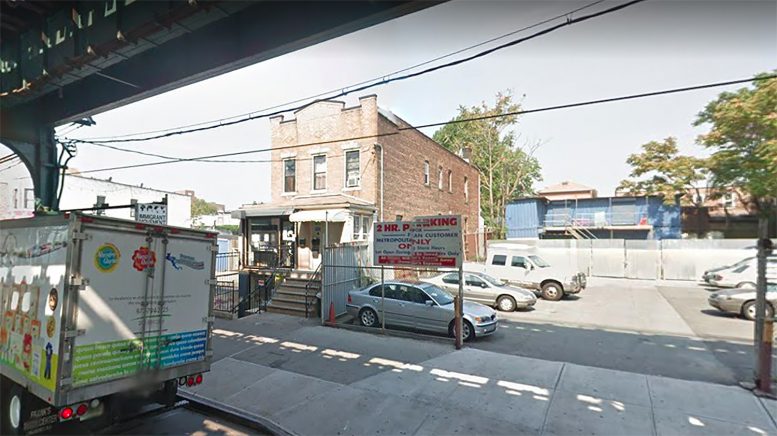
With the introduction of the subway, Forest Hills and Kew Gardens were transformed from quiet residential communities of one-family houses to active population centers. Harvey predicted that Queens Boulevard would become the "Park Avenue of Queens". With the introduction of the subway into the community of Forest Hills, Queens Borough President George U. Since the new line had express tracks, communities built around express stations, such as in Forest Hills and Kew Gardens became more desirable to live. They built apartment building in order to accommodate the influx of residents from Midtown Manhattan that would desire a quick and cheap commute to their jobs. In order to allow for the speculators to build fifteen-story apartment buildings, several blocks were rezoned.

In the late 1920s, speculators, upon learning the route of the proposed line, quickly bought up property on and around Queens Boulevard, and real estate prices soared, and older buildings were demolished in order to make way for new development. Since the parkways used part of the roadbed of Union Turnpike, no houses were demolished.Īround the same time, the construction of the Queens Boulevard subway line offered the possibility of quick commutes to the central business district in Midtown Manhattan. Two years later, the Interboro (now Jackie Robinson) Parkway was opened, linking Kew Gardens to Pennsylvania Avenue in East New York. In July 1933, the Grand Central Parkway opened from the Kew Gardens Interchange to the edge of Nassau County. Elegant one-family houses were built in the 1920s, as were apartment buildings such as Colonial Hall (1921) and Kew Hall (1922) that numbered more than twenty by 1936. In 1920, the Kew Gardens Inn at the railroad station opened for residential guests, who paid $40 a week for a room and a bath with meals. The first apartment building was the Kew Bolmer at 80–45 Kew Gardens Road, erected in 1915 a clubhouse followed in 1916 and a private school, Kew-Forest School, in 1918. In 1910, the property was sold piecemeal by the estate and during the next few years streets were extended, land graded and water and sewer pipes installed. Maple Grove Cemetery entrance on Queens Boulevard The architects of the development favored English and neo-Tudor styles, which still predominate in many sections of the neighborhood. Man's heirs, Aldrick Man and Albon Man Jr., decided to lay out a new community and called it at first Kew and then Kew Gardens after the well-known botanical gardens in England. The golf course was then abandoned and a new station was built in 1909 on Lefferts Boulevard. This remained in use until it was bisected in 1908 by the main line of the Long Island Rail Road, which had been moved 600 feet (180 m) to the south to eliminate a curve. In the 1890s, the executors of Man's estate laid out the Queens Bridge Golf Course on the hilly terrains south of the railroad. The station was named Hopedale, after Hopedale Hall, a hotel located at what is now Queens Boulevard and Union Turnpike. A Long Island Rail Road station was built for mourners in October and trains stopped there from mid-November. Maple Grove Cemetery on Kew Gardens Road opened in 1875. Man, who developed the neighborhood of Hollis Hill to the south, chiefly along Jamaica Avenue, while leaving the hilly land to the north undeveloped.

Much of the area was acquired in 1868 by Englishman Albon P. Kew Gardens was one of seven planned garden communities built in Queens from the late 19th century to 1950. Politically, Kew Gardens is represented by the New York City Council's 29th District. It is patrolled by the New York City Police Department's 102nd Precinct.
#HOMES FOR SALE IN CORONA QUEENS CODE#
Kew Gardens is located in Queens Community District 9 and its ZIP Code is 11415.

Forest Park is to the west and the neighborhood of Forest Hills to the north-west, Flushing Meadows–Corona Park north, Richmond Hill south, Briarwood southeast, and Kew Gardens Hills east. Kew Gardens is bounded to the north by the Union Turnpike and the Jackie Robinson Parkway (formerly the Interboro Parkway), to the east by the Van Wyck Expressway and 131st Street, to the south by Hillside Avenue, and to the west by Park Lane, Abingdon Road, and 118th Street.

Kew Gardens is a neighborhood in the central area of the New York City borough of Queens.


 0 kommentar(er)
0 kommentar(er)
